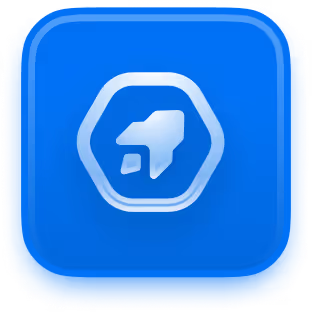.jpg)
The Art of Crafting Persuasive Cold Email Sequences

In today's digital world, businesses use cold emails to reach out to possible clients and customers. But what is it that makes a cold email work, instead of people ignoring or deleting it? To create effective cold emails, you need good ideas and plans to get more people to respond and take action.
Using cold email software helps you simplify outreach and gain insights with analytics and tracking features. This method analyzes data to improve your strategy and ensure each email has maximum impact and engagement.
This blog post will show you how to get exceptionally good at writing convincing cold emails. Now, let's delve into and master the strategies for crafting powerful and effective cold emails.
.jpg)
What is a cold email?
Consider cold emails as commencing a conversation at a corporate gathering. Visualize a sales representative engaging with potential clients in person. The goal is to get to know them and make a connection, not to sell something right away.
In outbound sales cold emails, the idea is to reach out to new leads online and start a relationship. The main aim is to turn these leads into potential business partners. The focus is on building a connection, not making a quick sale.
Mastering the Art of Persuasion in Cold Email Sequences
Uncover the secrets to crafting compelling and persuasive cold email sequences that captivate your audience and drive impactful responses.
Crafting the Perfect Cold Email Structure
Crafting an effective cold email requires a strategic structure to ensure optimal results. Follow these industry best practices:
1. Subject Line: When composing your email subject line, aim for brevity, clarity, and scannability, keeping it under 50 characters. Boost open rates by personalizing the subject and infusing it with compelling elements. Create a sense of urgency or curiosity using triggers like time-sensitive language.
2. Pre-header: Craft a concise and compelling introduction that swiftly highlights the unique benefits of your offering. If there's limited availability or it's urgent, mention that to encourage quick action. Keep it brief, around 125 characters, so it's easy to understand and gets your message across well.
3. Opening Line: Start your email by using the person's name or mentioning something important to them. This helps create a personal connection right from the beginning. Discuss common interests, problems, or interesting facts to grab their attention.
Offer something exciting or valuable right at the beginning to quickly get them interested. Keep it short and easy to read for a fast and engaging introduction.
4. Personalized Body Content: Write your email focusing on what bothers the prospect and what they like. Talk more about the good things and how it's worth their investment instead of getting into all the technical details.
Maintain a warm and intimate tone by incorporating "I" into the dialogue. Make it easy to read with short paragraphs, subheadings, and bullet points so it's clear and simple to understand.
5. Compelling Closing Statement: Conclude your email by repeating the primary advantage you provide and its significance. Use words that show it's urgent or not available for long to encourage quick action.
Build trust by sharing stories from happy clients or impressive stats. Explicitly instruct them on the next steps, such as arranging a meeting or attempting a free trial. Additionally, express your gratitude for their time. Your commitment will prove beneficial to them.
6. Clear Call-to-Action: To make your uninvited email more visible, place your call-to-action (CTA) at the start and end. Employ action-oriented language, such as Schedule a demo or Get a free trial, to prompt specific responses.
Keep your email simple by having just one clear thing you want them to do, known as a Call to Action (CTA). Make it urgent or mention that it's not available for long to get them to act quickly. Keep your message focused on this one important action.
7. Email Sign-off: Conclude your email with a farewell note that aligns with your message. Make it easy for them to reach you by giving your phone number, email, and website.
Make your signature special by adding a picture or your brand logo for a visual touch. Put a catchy phrase and mention any awards or achievements to build trust.
Leverage Success.ai’s AI email writer to enhance your email content, addressing prospect pain points, emphasizing benefits, and maintaining a conversational tone.
.jpg)
What Are the Best Practices of Cold Email Writing?
Getting exceptionally good at writing persuasive cold emails needs a mix of research, smart thinking, and practiced skills. Make your outreach better by using these helpful tips. Ensure that you grab attention, receive meaningful responses, and distinguish yourself in your cold emails to potential customers.
1 – Build Rapport Through Personalized Openings
To make sure people pay attention to your email, start with something personal instead of using a generic greeting. Steer clear of formalities such as "Dear Sir/Madam" and invest some time to make your introduction unique.
Use the person's name, mention their company, or bring in other personal details. This makes your message more human and shows you're serious about understanding what they need. It helps build a quick connection and starts the relationship on a positive note.
2 – Concise Communication: Get to the Point Quickly
Get straight to the point and skip extra details. In the first couple of paragraphs, clearly say why you're reaching out and what you have to offer. Whether it's asking for a meeting, sharing info, or introducing your company, express your purpose briefly.
Keep it short – aim for about 5-6 short paragraphs. This way, you can get your message across quickly and grab your prospect's attention.
3 – Provide Value to Captivate Prospects
Organize your email by focusing on what benefits the recipient, instead of solely discussing your product or company. Behave like a person who truly desires to assist, not merely to close a deal.
Discuss the challenges they encounter and disseminate helpful resources such as articles, scholarly papers, or case studies. Or, give them practical advice to solve problems. To build trust and show you're reliable, focus on giving them something valuable first. This increases the chances of them reacting favorably when you propose a demonstration or a meeting.
4 – Speak Your Prospect's Language Effectively
To avoid being ignored or blocked, refrain from using excessive sales language in your cold emails. Spend time learning about the people you're emailing so you can use language that makes sense to them.
Write as a person, not a salesperson. Make it personal by discussing things you have in common, like interests, goals, or values. Write emails that connect with potential customers in a genuine and interesting way.
.jpg)
5 – Utilize Urgency Triggers Thoughtfully
Enhance your cold email effectiveness by incorporating subtle urgency triggers to prompt your prospect to respond or take action. However, exercise caution to avoid being overly aggressive. For instance, mention an expiring 20% discount, limited slots for a relevant webinar, or upcoming product features.
The key is to instill motivation and a sense of value for immediate action while maintaining a balanced approach. Strive for genuine engagement based on the perceived value, steering clear of aggressive hard sells or manipulative tactics. Encourage prospects to respond authentically, driven by the value they perceive in your offering.
6 – Clearly Define Your Ask with a Specific CTA
In your cold email, ensure a clear call-to-action (CTA) guides your prospect on the next steps, leaving no room for uncertainty. You should provide clear instructions on what actions to take. You can do things like trying a demo, getting a free trial, joining a webinar, getting content, or scheduling a call.
Highlight the CTA by putting it in its own paragraph or bullet point. Use action words like Schedule, Sign up, Reserve, Download, or Claim to create a feeling of urgency. Precision in your request facilitates a seamless transition for your prospect to take the desired action.
7 – Thorough Proofreading for Professionalism
Prior to sending, carefully proofread your cold emails. A flawless first impression is crucial, and errors can convey unprofessionalism or carelessness. Conduct a thorough review for typos, grammar issues, inaccuracies, unclear writing, inappropriate tone, or weak calls-to-action (CTAs).
Reading your email aloud helps catch nuances your eyes might overlook. An error-free email shows credibility and respect for your prospect's time, increasing the chance of a response.
8 – Implement Persistent Follow-Ups
Anticipate that prospects may not respond immediately to your initial cold email. Effective engagement often requires multiple follow-ups. Research indicates that sending an additional follow-up can boost the response rate from 9% to 13%. Furthermore, approximately 50% of all sales occur after the fifth follow-up email.
Follow-ups demonstrate persistence and genuine interest in assisting prospects. Ensure each follow-up contains new information rather than simply resending the same email, preventing annoyance.
Consider introducing a new case study, additional resources, or testimonials in each follow-up to maintain interest. Send multiple follow-ups spaced a few days or a week apart for a higher reply rate. Utilize our email outreach service to send timely follow-up emails without fail.
.jpg)
9 –Continuously Improve
Approach your cold email as an ongoing experiment. Effective experimentation involves testing various elements like subject lines, content, and calls to action. Monitor open and response rates, analyze the data, and optimize your copy for better performance.
Use A/B testing to improve your email copy and increase engagement by testing subject lines, opening lines, and CTAs. Cold emailing requires ongoing optimization, so consistently refine your copy based on data to ensure maximum conversion rates.
Avoid 4 Common Errors in your cold emails
Succeeding at cold emailing requires avoiding key mistakes along with implementing best practices. Here are five critical errors to steer clear of in your cold email copy:
Avoid Writing generalized messages
People often ignore or mark as spam generic "Dear Sir or Madam" emails. Research your prospects for personalized messages, such as checking LinkedIn or company bios. Reference specific details like promotions or recent events to enhance your chances of building a genuine connection.
Don’t Practice Writing Lengthy Emails
In cold emails, swiftly introduce yourself, state the purpose, and include a specific request. Break up the message into short, scannable sentences to keep it engaging and easy to read. The key is to convey essential information upfront before losing their interest.
Avoid Premature Selling
In initial outreach, avoid excessive promotion of your product. Focus on providing value, building rapport, and positioning yourself as a resource. Once you capture attention, seamlessly introduce how your offerings can address their needs.
Gentle Approach, No Pressure Tactics
Avoid being overly pushy in your cold email. For example, if someone asks for a meeting or a quick response, it might seem pushy and discourage them. Consider allowing the connection to develop before making substantial requests.
.jpg)
Conclusion
Learning to create effective cold email sequences is important for businesses to build connections and increase conversions. By using the methods and tips in this article, business owners can improve their cold email outreach and get more responses.
Keep in mind that the ultimate objective isn't an instant sale but the creation of an enduring relationship. Customize your cold email format to connect with your prospects seamlessly, laying the groundwork for future collaboration. Take your cold email campaigns to new heights with Success.ai and unlock the full potential of your outreach efforts.


Try Success.ai No credit card required
Unlock unlimited access to 700M+ B2B leads, with unlimited email sending & warm-up. Supercharge your growth now with Success.ai!
















.avif)


.avif)





.avif)






.avif)












.jpg)

-min.jpg)








.avif)
.svg)
.avif)

